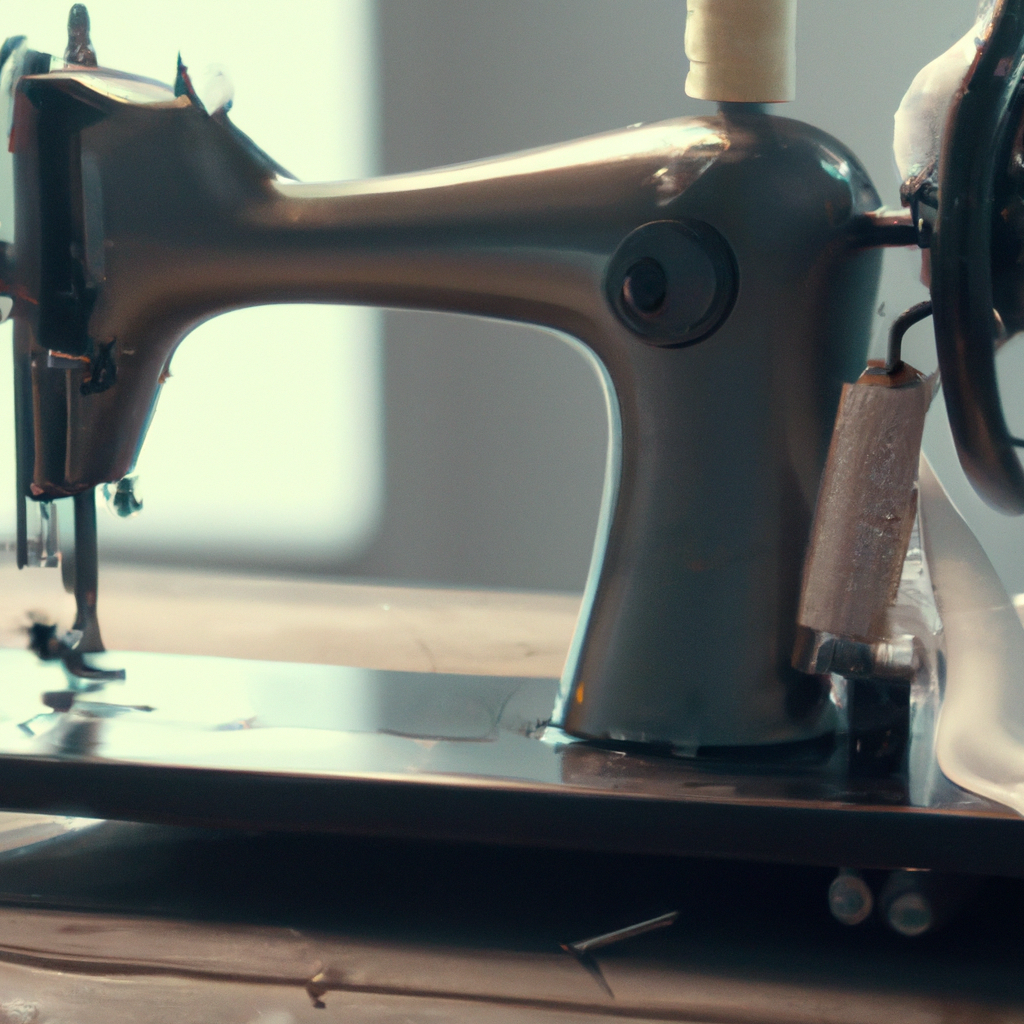A sewing machine is a mechanical device that is used to sew fabrics together. It is a popular tool used for creating clothing and various other types of textiles. Many people wonder how a sewing machine works, and in this article, we will explore the mechanism behind it, the stitching process, and the different parts that make up a sewing machine.
Mechanism of a Sewing Machine
A sewing machine works by using a combination of mechanical parts to create a stitch on fabric. The process involves the up and down movement of the needle, which passes through the fabric, and the bobbin, which is located underneath the fabric. The needle and bobbin work together to create a lockstitch, which is the most common type of stitch.
The stitching process
When the sewing machine is turned on, the needle moves up and down, creating a hole in the fabric. The needle is then pulled back up, and the bobbin thread is pulled through the hole, creating a loop. The needle then moves back down, catching the bobbin thread and pulling it back up through the fabric. This process is repeated over and over again, creating a straight stitch, which can be used for basic sewing projects.
The needle
The needle is a critical component of a sewing machine. It is a thin, pointed piece of metal that moves up and down, piercing the fabric and creating a hole. Needles come in various sizes and types, depending on the type of fabric being sewn. The needle thread passes through the eye of the needle, and as the needle moves up and down, it catches the bobbin thread, creating a stitch.
The bobbin
The bobbin is located underneath the sewing machine’s needle plate and holds the bottom thread. It is a small, rounded spool that rotates while the needle moves up and down, creating a stitch. The bobbin thread is pulled up through the fabric by the needle, and the two threads are interlocked to create a strong, secure stitch.
The thread
The thread is an essential component of a sewing machine. It is a thin, twisted strand of fiber that is used to create the stitch. Thread comes in various colors and types, depending on the type of fabric being sewn. The thread is wound around the spool pin, which is located at the top of the machine. It then passes through the tension discs, which regulate the amount of tension on the thread. The thread then passes through the needle eye and is pulled through the fabric by the needle.
Stitching techniques
There are various stitching techniques that can be used with a sewing machine. The straight stitch is the most common and is used for basic sewing projects. However, there are other types of stitches, such as the zigzag stitch, which is used for finishing raw edges, and the buttonhole stitch, which is used for creating buttonholes. There are also decorative stitches that can be used for embroidery and other embellishments.
Sewing guide
A sewing guide is a helpful tool for beginners and experienced sewers alike. It is a piece of plastic or metal that is attached to the sewing machine and serves as a guide for the fabric. It helps keep the fabric straight and even, making it easier to create a straight stitch. Sewing guides come in various sizes and shapes, depending on the type of project being sewn.
Conclusion
In conclusion, a sewing machine is a simple yet complex mechanical device that is used to sew fabrics together. It works by using a combination of mechanical parts to create a stitch on fabric. The needle and bobbin work together to create a lockstitch, which is the most common type of stitch. Needles come in various sizes and types, depending on the type of fabric being sewn. The bobbin holds the bottom thread and rotates while the needle moves up and down, creating a stitch. The thread is an essential component of a sewing machine and comes in various colors and types. There are various stitching techniques that can be used with a sewing machine, and a sewing guide is a helpful tool for beginners and experienced sewers alike. With this knowledge, you can confidently operate a sewing machine and create beautiful projects.







